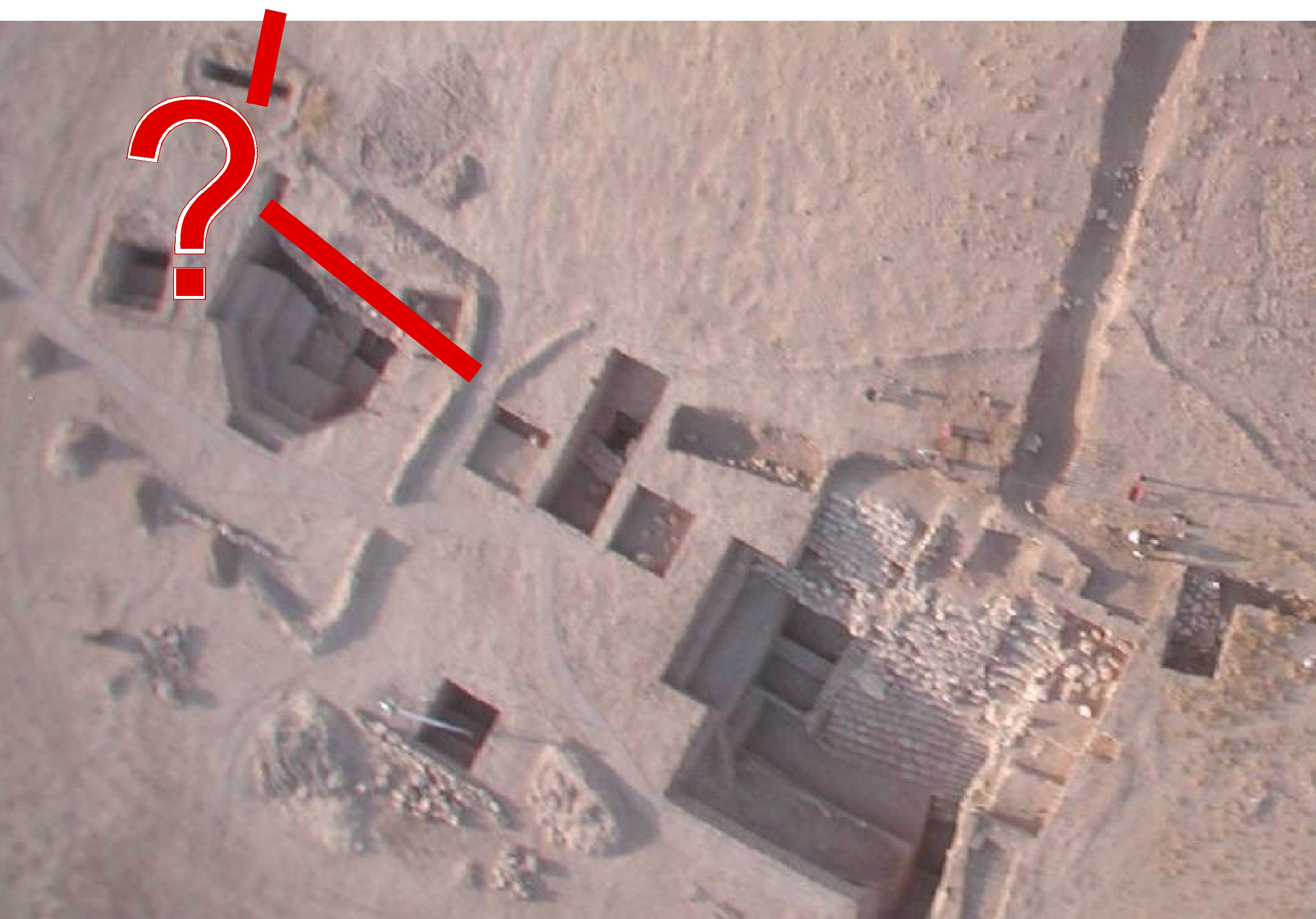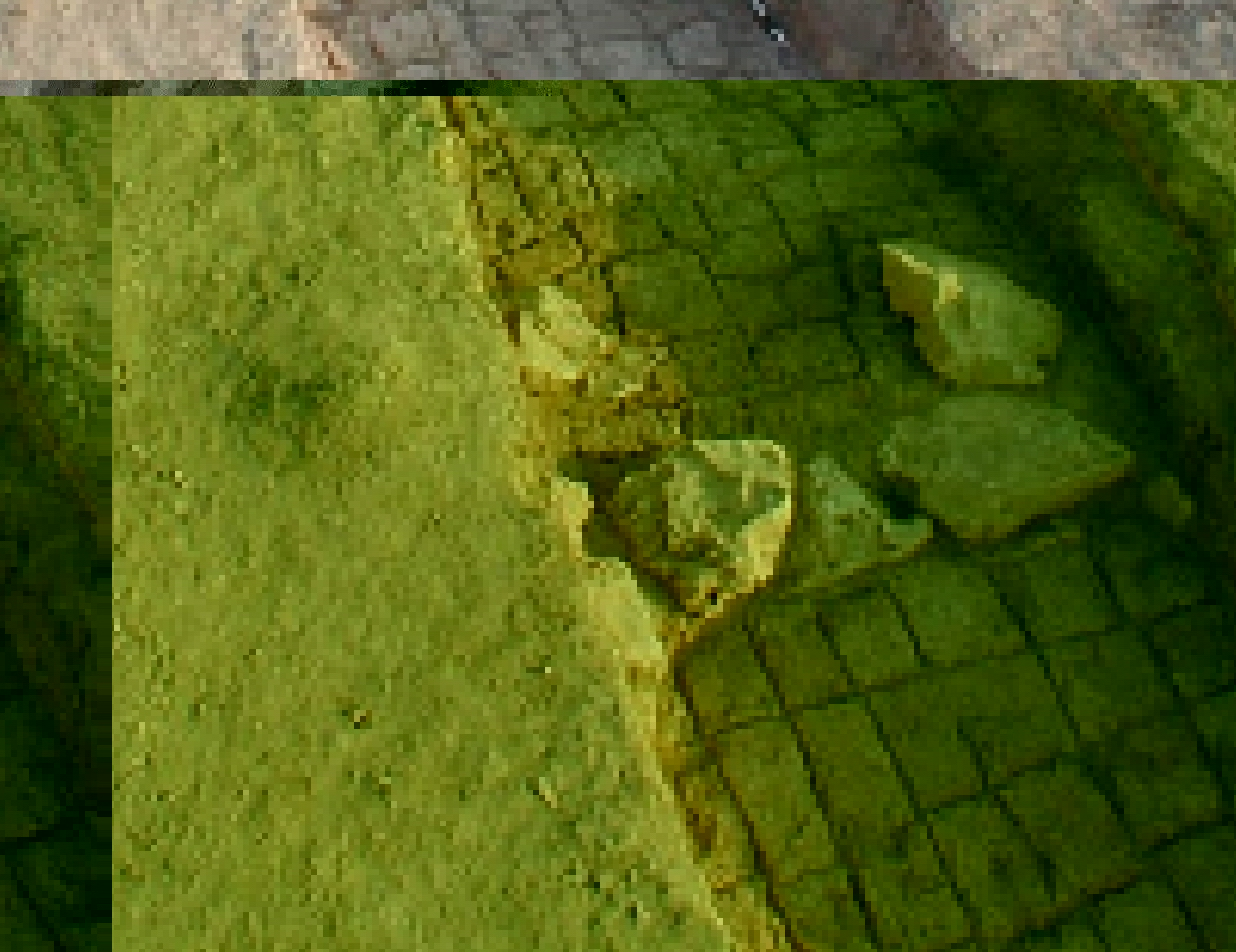Back to top: Prospects 2006
.ppt
- 1. The articulation of the revetment wall
- 2. The level of the Plaza
- 3. The fill within the revetment wall
- 4. The upper apron
- 5. The eastern portion of the staircase
- 6. The surface of the glacis
- 7. Special projects
|
At the end of the 2005 season, we had prepared a detailed request to the Directorate General of Antiquities and Museums with our reasons for recommeding the use of mechanical means to clear the massive inert deposit overlaying the ancient Plaza. The main thrust of the argument was that we have convincing evidence to the effect that there are no structures in this deposit, and that manual excavation cannot possibly bring back to light one of the most remarkable architectural monuments of third millennium Syro-Mesopotamia. Our recommendation was not accepted, so as a result we will devote one more season to clearing up a few remaining points of archaeological interest, using of course manual excavation only. These questions are listed below, in an order proceeding from west to east. At a later date we will define explicitly which specific excavation unit will undertake which individual problem, and the staff composition of each unit. |
| 1. The articulation of the revetment wall Does the revetment wall have a curved or a polygonal configuration? While the geo-physical survey suggested an oval, the current exposure, especially in J1, suggests otherwise. Linking up the sounding at the western end of J1 should provide an answer. A polygonal configuration would be more in line with the current understanding the Chuera "Steinbauten." |
Back to top: Prospects 2006
Wall
 |
|
| 2. The level of the Plaza What is the actual elevation of the Plaza (we assume it to be 8500) and what is the exact shape of the escarpment that links the Plaza with the base of the revetment wall? |
||
 |
||
| 3. The fill within the revetment wall A surprise of the 2005 season was the discovery of late chalcolithic material at the outer edge of the Terrace, contained by the revetment wall. We want to obtain a larger exposure of the same, both to gain a fresh insight in the nature of the deposition and to secure a broader inventory of ceramic types. |  |
|
| 4. The upper apron The western end of the upper apron is tantalizingly complete and near the surface – it should prove an easy task to expose this entire component of the staircase, which will greatly add to the fruition of its spectacular monumentality. |
 |
|
| 5. The eastern portion of the staircase A small sounding carried out by the German team, as well as the general configuration of the staircase, suggests that the staircase as currently exposed is only one half of an even more monumental complex. We have already opened up part of this area, and will continue in the hope of obtaining a full view of the staircase as projected. |
Back to top: Prospects 2006
Projects 1
 |
||
| 6. The surface of the glacis The initial sounding carried out by the German team in B6 exposed the surface of the glacis, consisting of mudbricks, with rows of stones. The material in the original trench has completely disintegrated. We may want to expose what we expect to be more of the same and to preserve it. |
 |
Back to top: Prospects 2006
Projects 2
| 7. Special projects a. The Global Record programs are now fully functioning. We will expect to complete the full documentation by the end of the fifth week of excavation, so that we can devote the three weeks of the study period to complete the narrative portion. b. We will expand the ceramic analysis project to deal with even more of the material excavated during the season, and to tackle the backlog. c. We will have a new position as graphic registrar, in order to integrate more promptly than in previous years the graphic record (phots and drawings) into the global record. d. We may have a continuation of the geo-physical survey in part of the Plaza and of the Outer City. e. We will attempt to integrate more effectively the results of previous GIS work in the Global Record. |